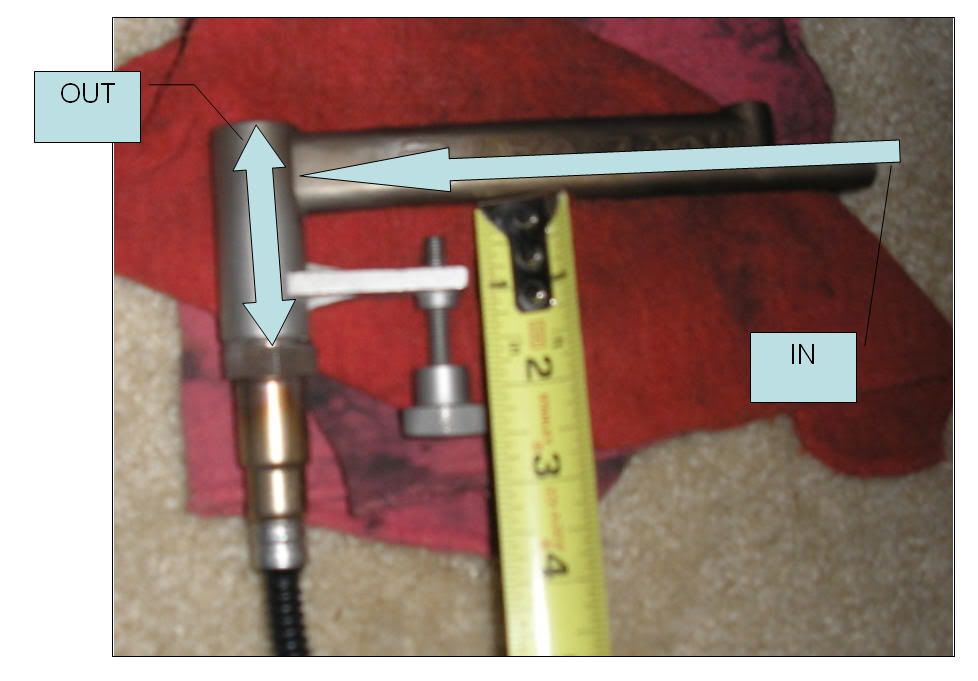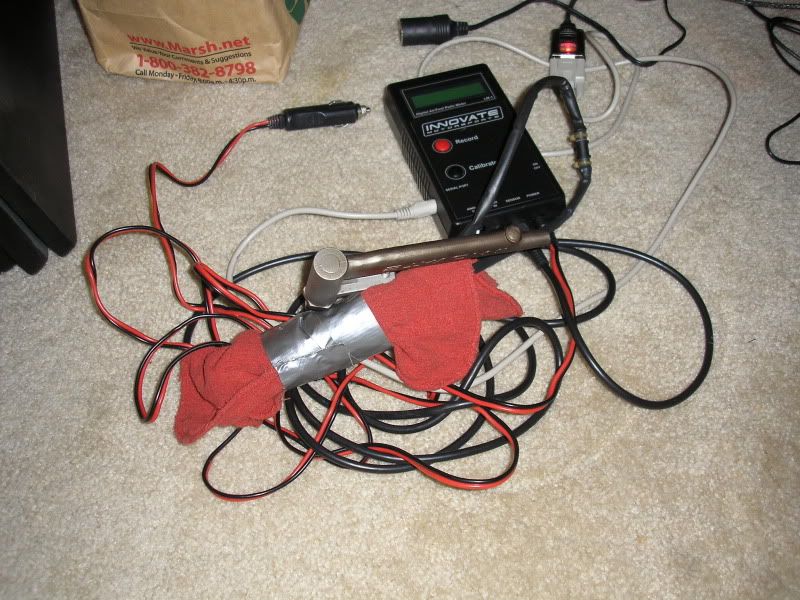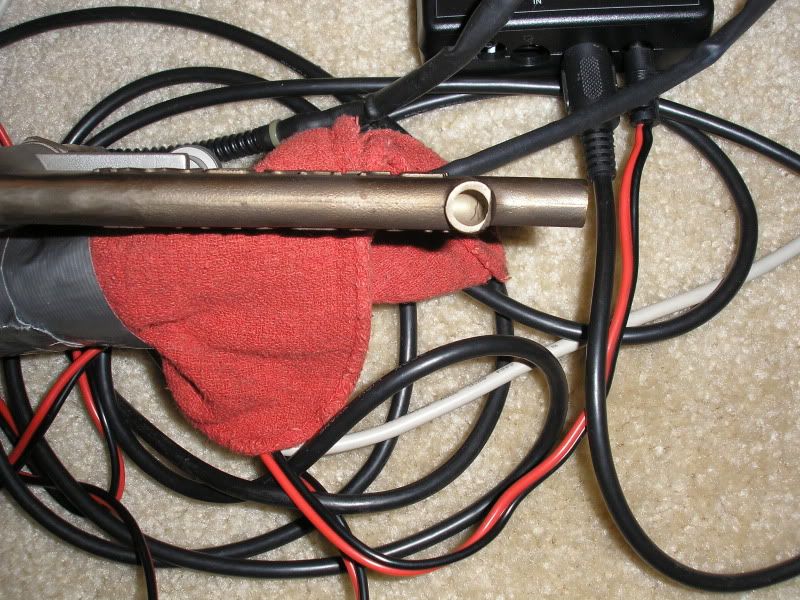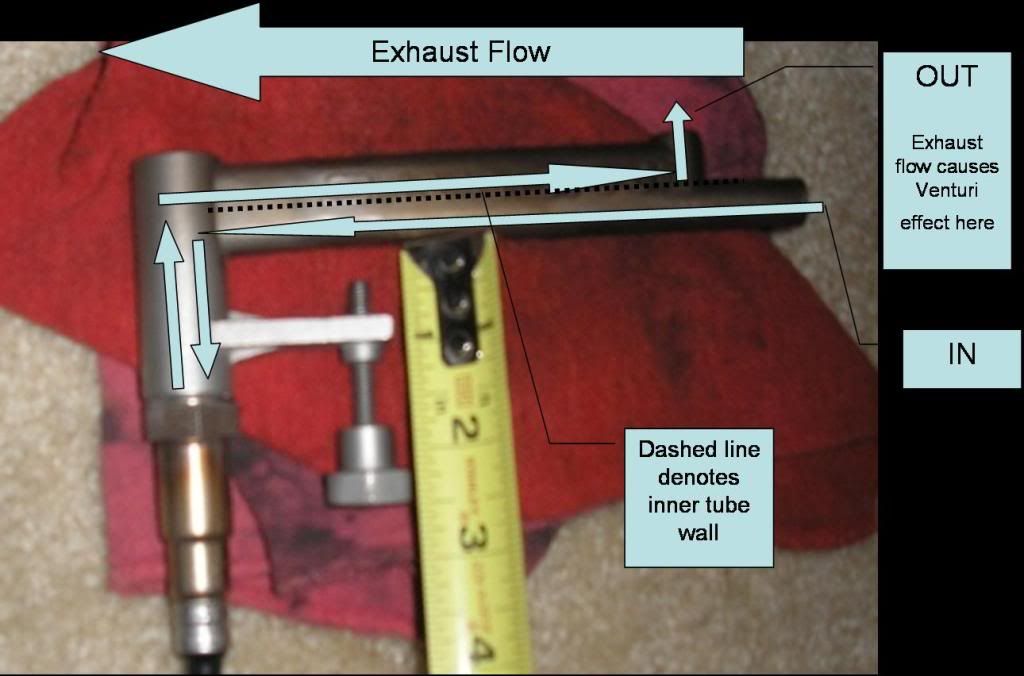
Announcement
Collapse
No announcement yet.
LM-1 Wideband for carb tuning
Collapse
X
-
mine has a 3 ft copper tube that goes all the way up to the collector. I could sniff individual down tubes if i wanted that way.Originally posted by 5azzmonkey View PostDoesn't look like that will work with the Megaphone exhaust as I don't have that nice little stub like your Kerker does.
Does the tube that the O2 senser go into go all the way through? I bet I can cobble something together with some threaded pipe for cheap.
Thanks,
Dave
Comment
-
 koolaid_kid
koolaid_kid
The tube the sensor screws into makes an "L" and exits to the hole in the end I showed in the first 2 pics. I have heard of folk making their own custom ones, either because of fitment issues or the high price of the Innovate unit.Originally posted by 5azzmonkey View PostDoesn't look like that will work with the Megaphone exhaust as I don't have that nice little stub like your Kerker does.
Does the tube that the O2 senser go into go all the way through? I bet I can cobble something together with some threaded pipe for cheap.
Thanks,
Dave
Comment
-
Originally posted by koolaid_kid View PostThe tube the sensor screws into makes an "L" and exits to the hole in the end I showed in the first 2 pics. I have heard of folk making their own custom ones, either because of fitment issues or the high price of the Innovate unit.
Is this the way the exhaust flow goes then?
 82 GS1100E
82 GS1100E
five asses because it's far superior to having just four!
Yes, I watched too much South Park!
Comment
-
 koolaid_kid
koolaid_kid
Just about. It goes in the venturi as you indicate, makes a sharp left to the sensor, does a 180 turn, goes to the top and makes a sharp right. It then continues back along the tube and makes a sharp left near the front of the venturi and exits through a hole I failed to get a picture of. Basically, the tube that slips into the tailpipe has two channels, the entrance hole I already showed, and then an exit channel. Most likely that is a bit of overkill, but that is the way they designed it.
I'll try to get a shot of the exit hole tonight.
Comment
-
 koolaid_kid
koolaid_kid
Here is the exit. It is at the far right and goes back into the exhaust stream for a "venturi" effect. A much simpler method could be developed; I suspect they did it for strength as much as anything.


Hope this helps.
Comment
-
What is that taped pipe wrapped with a towel?Originally posted by koolaid_kid View PostHere is the exit. It is at the far right and goes back into the exhaust stream for a "venturi" effect. A much simpler method could be developed; I suspect they did it for strength as much as anything.


Hope this helps.
Thanks!2000 Honda Valkyrie Tourer (it's gone)
1985 Suzuki Madura GV1200
2 X 1980 Suzuki GSX1100ETs (next projects)
Comment
-
 koolaid_kid
koolaid_kid
No. That is the exhaust clamp with the sensor installed, resting on some wires that have been wrapped in a towel because they were rubbing on the tank and sidecovers. This was just to get everything ready for the pictures.Originally posted by quexpress View PostWhat is that taped pipe wrapped with a towel?
Thanks!
When I download the log files to my pc, I have to power up the LM-1, which requires the O2 sensor. So I rest the lot (clamp, sensor, wires) on shop towels. It is a heated sensor and gets quite warm to the touch.
Comment
-
Koolaid Kid
Thanks for sharing these photos with us. Although I do not have such equipment, I am very interested in this subject, as I am a firm believer in using technology and Nessism's philosophy of "to measure is to know". So why not combine 80's technology (our GS carbs) with modern digital measuring technology (wideband oxygen sensor)? Other members such as Posplayr have also used the technique.
I would love to try and make up a system using a sensor from a car and the venturi as per your photos, and some digital data interface to a PC.
Could you tell us how you proceed after collecting the data and downloading it to your PC? Perhaps show some screenshots of the data, and tell us how you interpret it.
I would like to suggest that you use this opportunity to draw up a how-to "tutorial" on this subject and have it placed on BassCliff's site. That would be "super-cool"!
Thanks!1981 GS850G "Blue Magic" (Bike Of The Month April 2009)
1981 GS1000G "Leo" (Bike Of The Month August 2023)
Comment
-
Koolaid KidOriginally posted by koolaid_kid View PostBasically, the tube that slips into the tailpipe has two channels, the entrance hole I already showed, and then an exit channel. Most likely that is a bit of overkill, but that is the way they designed it.
So just to clarify the design of that venturi tube, am I correct in understanding that the inlet tube going down inside the venturi tube is totally closed off and separated from the return path leading back to the exit hole?
The design could just as well have two separate tubes for inlet/exit, instead of the (difficult to make) enclosed venturi tube with separate channels inside, right? Or am I missing something here?
Thanks!1981 GS850G "Blue Magic" (Bike Of The Month April 2009)
1981 GS1000G "Leo" (Bike Of The Month August 2023)
Comment
-
Koolaid Kid, can you check my updated pic showing what I think is the air flow through the venturi tube? This would help clarify things for 2BRacing and Myself. When I get a LM1/2 I will be making my own tube, most likely from copper pipe.Originally posted by 2BRacing View PostKoolaid Kid
So just to clarify the design of that venturi tube, am I correct in understanding that the inlet tube going down inside the venturi tube is totally closed off and separated from the return path leading back to the exit hole?
The design could just as well have two separate tubes for inlet/exit, instead of the (difficult to make) enclosed venturi tube with separate channels inside, right? Or am I missing something here?
Thanks!

Thanks,
Dave82 GS1100E
five asses because it's far superior to having just four!
Yes, I watched too much South Park!
Comment
-
If you go to the Innovate website you can download teh logworks software.Originally posted by 2BRacing View PostKoolaid Kid
Thanks for sharing these photos with us. Although I do not have such equipment, I am very interested in this subject, as I am a firm believer in using technology and Nessism's philosophy of "to measure is to know". So why not combine 80's technology (our GS carbs) with modern digital measuring technology (wideband oxygen sensor)? Other members such as Posplayr have also used the technique.
I would love to try and make up a system using a sensor from a car and the venturi as per your photos, and some digital data interface to a PC.
Could you tell us how you proceed after collecting the data and downloading it to your PC? Perhaps show some screenshots of the data, and tell us how you interpret it.
I would like to suggest that you use this opportunity to draw up a how-to "tutorial" on this subject and have it placed on BassCliff's site. That would be "super-cool"!
Thanks!
Then if you go to this link there is a log file from one of my final runs that you can download and look at using the Innovate software.
I have more channels of course.
On the sniffer I made (found plans on the web), I have more of a straight "flow through" design made from a straight piece of steel pipe and some copper tubing and couplers. It seems to have very little lag and or effect on the exhaust flow.Last edited by posplayr; 09-16-2011, 01:37 PM.
Comment
.png)


Comment